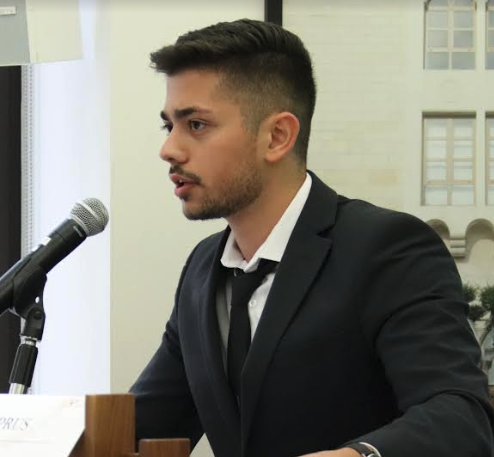19 Top Thought Leaders on the Topic of Trust
As trust in institutions like government, the media and even NGOs continues to plummet,...

Note: first of two parts
Headquartered in Dallas, The Richards Group has long been one of the most successful advertising agencies in the United States. Founded in 1976 by Stan Richards, the firm is known for its Chick-fil-A “Eat Mor Chikin” and Motel 6 “We’ll Leave the Light On for You” campaigns, and has boasted other notable client brands, such as The Home Depot, Fruit of the Loom and The Salvation Army.
At age 88, Stan was still running the place in late 2020, always having final say on campaign decisions. That changed in an instant, however, after comments he made during a Zoom meeting with 40 employees. His creative team was presenting a new campaign idea for Motel 6, which would feature an assortment of Black, white and Hispanic guests. Stan’s immediate and blunt assessment was:
“It’s too Black.”
He then went on to say the ad would offend the motel chain’s “white supremacist” guests.
The next day, Stan apologized over Zoom to more than a hundred of his employees after word spread of his comments. It was too late though—the damage was done.
Someone within The Richards Group leaked a recording of the founder’s remarks to Motel 6, Ad Age and the Dallas Morning News. Motel 6 immediately put out a statement announcing it had fired the firm; The Home Depot, Keurig Dr. Pepper, Cracker Barrel and others followed.
The Richards Group issued a public statement of apology, but it did little to stem the exodus. The agency lost 40% of its business in a week.
Shocked by the sudden “cancellation,” Stan had no choice but to step down.
It would be easy to dismiss the Stan Richards episode as a case of “Mad Men Meets Cancel Culture.” After all, Stan started in advertising in the 1950s—a time when dinosaurs like the dashing, entitled Don Draper still roamed the earth.
But there’s more going on here. And it says more about the PR challenges we face in 2021 than it does about the advertising business.
I moved to Dallas in 1989 for a newspaper reporting job. Over the years, I held positions at three of the city’s largest media organizations, the last being communications officer for the company that owned the Dallas Morning News and the Dallas/Fort Worth ABC affiliate.
I’ve gotten to know the media, and particularly the Dallas media, pretty well over the past three decades. And I can tell you with a high degree of certainty the following:
Ten years ago,
Twenty years ago, the story probably would not have been covered at all. From a reputation management standpoint, it would have been an embarrassing bump in the road at worst—not an existential crisis.
So, what’s different today that cost one of the country’s foremost brand-builders his job—and almost his agency?
Today's reputation management landscape has shifted in five important ways over the past 10 years. Unfortunately for Stan and the Richards Group, they found themselves on the wrong end of each of these changes.
Let's dive into each of these shifts.
Employees are activists within their own organizations, holding them publicly accountable for their stated values.
This is how Stan's statements became public in the first place. Employees objected to Stan's remarks and shared them outside the organization, perhaps knowing full well the damage they might do. This suggests that there were larger issues within the agency as it relates to DEI.
Whoever leaked Stan's remarks had likely reached their breaking point.
It's no secret that many within The Richards Group and the larger Dallas advertising community considered the agency behind the times on any number of issues, including what some characterized as a "stunning lack of diversity." It has long had a reputation for being "stuffy."
When my late wife Cathy worked in PR at The Richards Group in the early 2000s, she never felt like she fit in there. She thought the agency had a "type" it sought in its female account executives—and that she didn't dress, look or act the way she was expected to.
It's why she begged me late one night to support her in her decision to resign from the agency. I had just left my last corporate job and we had no other source of income as I prepared to start Idea Grove, but I couldn't give my blessing fast enough when the tears began to roll down her cheeks.
That was 2005. This in 2022. When people don't feel seen, heard or represented within their organizations today, they won't hesitate to share their "truth"—whether on Glassdoor or by leaking information to a client, on social media, or to Ad Age.
Brands realize they can no longer wait out controversies and must take decisive stands on issues quickly.
This is why Motel 6 and others knew they had to cut ties immediately rather than investigate the situation themselves or take a more deliberative approach. Believe me, this is not the way corporations—particularly large ones—like to make decisions.
Anyone who's worked at a big corporation knows how slowly the wheels often turn on even the smallest decisions. Do you think Motel 6 would so abruptly end a three-decade-long relationship if not for fear that it might face PR repercussions itself for any delay? Today, when brands don't react immediately to actions or remarks that their audiences consider offensive, they are viewed as being insensitive or even complicit in the offense.
Take the case of James Dolan, owner of the New York Knicks, New York Rangers and Madison Square Garden. Pressed to comment on the death of George Floyd, Dolan wrote to employees, “We are not any more qualified than anyone else to offer our opinion on social matters. What’s important is how we operate." The media obtained the Dolan missive and published parts of it. Some employees, including Knicks players, were reportedly "furious" with Dolan's refusal to issue a statement about Floyd or public support for protests.
The next day, Dolan attempted damage control, issuing another internal message that was leaked, before finally issuing a statement that condemned the Floyd killing. By then, the damage to Dolan's reputation was done.
Traditional public statements are routinely dismissed as inauthentic and too little, too late.
Public statements, like those the Richards Group initially put out, generally fall on deaf ears if they are read at all today. They are so carefully crafted that the public simply assumes they are insincere. (Perhaps that's why Thesaurus.com considers "strategic" an antonym of "honest.")
And let's be blunt: Stan's apology was insincere. He called his misstep the "biggest mistake of my life" and said "all I can say is I was wrong" in The Richards Group's press release. But what he really thought was expressed in his interview with Glenn Hunter at Texas Monthly, which he gave to Hunter the same day the press release went out.
He told Hunter of his "it's too Black" comment:
On reflection, instead of using those three words, I could have said something that was much more clouded in its meaning. And it would have saved an awful lot of trouble ... Because mine was not a racist comment. I’ve never been a racist anytime in my life. But it was read that way and, unfortunately, it has proved very costly.
So what Stan actually thought is that the incident that almost destroyed his agency was much ado about nothing. He thought that he had not made a racist comment at all, and that if he had simply obfuscated his point with more politically correct language, none of this would have happened.
That's why people look to Twitter discussions, Glassdoor reviews, media reports or almost any source other than public statements when it comes to public controversies today.
Mainstream news outlets are more likely to use terms like "racist" and "lying" to describe people's words and actions than in the past.
Traditionally, the mainstream news media—particularly daily newspapers and other outlets seeking to claim a mantle of objectivity—have hesitated to use judgmental terms in describing the people they cover. They would leave it to those on each side of an issue to characterize their opponents.
This approach has increasingly seemed disingenuous to critics, who label it "he said, she said" journalism designed not to offend rather than to enlighten audiences.
So in the past, for example, a headline about the Stan Richards controversy might have read that Stan was "accused" of a racist remark, rather than simply stating as fact that his remark was racist, as Ad Age's stories (and most of the other coverage) have done.
That's a big difference. It's a sea change that began in earnest with Donald Trump's run for the presidency in 2016. Whether to call Trump's misstatements "lies" and his racially charged statements "racist" was a subject of enormous controversy during the campaign. Ultimately, most major media outlets have begun using these terms to characterize the words and behavior of Trump and others—including Stan Richards, in this case.
Mainstream news outlets have a more limited role in gatekeeping the news and shaping narratives for the public.
If you've seen the excellent film The Post (No. 8 on this list), you have a good idea of what much of journalism used to be like. There were not just gatekeepers, but layers of gatekeepers.
Let's say I work for DoorDash and I want the public to know that your food might arrive cold if you don't include a tip. Today I can post a video on TikTok and the world knows. Before social media, the DoorDash employee would have to call their local news station or newspaper and hope they would take an interest.
Then, if a reporter did like the story, they would pitch it to their editor, who might kill it for any number of reasons. Finally, the publisher might kill a story (as Katharine Graham was lobbied to do in The Post) because it's about a friend, or it would be bad for the local business community, or because DoorDash is an advertiser in the paper.
Today, there's no one at the Dallas Morning News who can say, "I've known Stan Richards for 30 years and I know he's no racist. This is not a story." Because that gatekeeper no longers decides what's a story and what isn't.
What should we make of these changes and how should we respond to the new challenges that come with them?
To The Richard Group's credit, they have done an admirable job of responding to this existential crisis for their agency. By last summer they were earning kudos from Adweek for the changes they had made to their internal culture, and were speaking on "Forging a New, Inclusive Path Forward" in an event for the Public Relations Society of America's Dallas chapter.
And the clients have been returning.
So, what can we learn from Stan Richards' painful experience to help us better build, grow and protect our own brands? We'll discuss that in Part 2.
Photo source: The Richards Group on Facebook

Scott is founder and CEO of Idea Grove, one of the most forward-looking public relations agencies in the United States. Idea Grove focuses on helping technology companies reach media and buyers, with clients ranging from venture-backed startups to Fortune 100 companies.

As trust in institutions like government, the media and even NGOs continues to plummet,...

Everybody claims to be a growth hacker these days -- at least if you check out people's bios on...
Leave a Comment